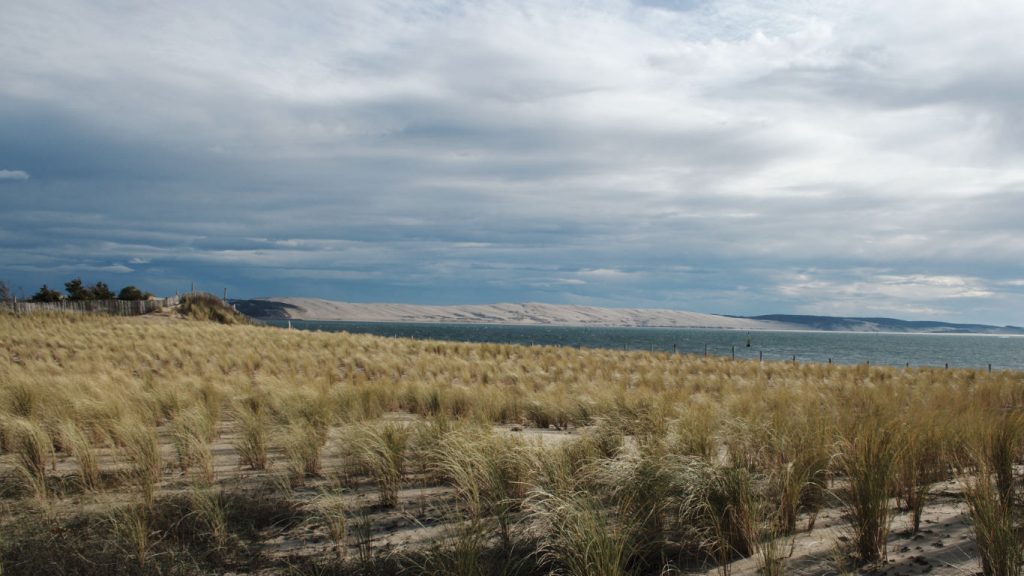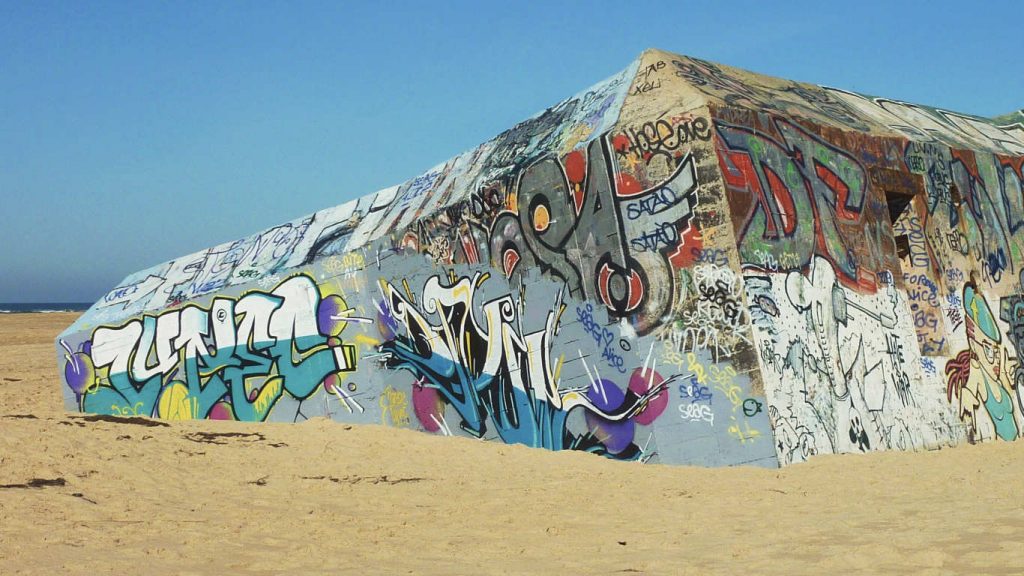
Cap Ferret – wonderfully unspoilt and beautiful
Cap Ferret in the Aquitaine, like Ile-de-Ré further north, is where cool French folk and celebrities come to holiday – it’s been called ‘the Gallic Hamptons’ but don’t let you put you off – despite the presence of VIPs, Cap Ferret still manages to retain an unspoilt air that is addictive. Understated villas and chic boutiques mix with wooden cabins painted in bright colours and stacks of oyster crates. Called ‘le bout du monde‘ or the end of the world, by the French, a stay at Cap Ferret is all about getting away from it all – enjoying the sun, sand and sea, and downing half a dozen oysters with a chilled glass of Bordeaux white.
‘The climate is not too hot and not too cold, with four distinct seasons,’ says French designer, Philippe Starck who has a holiday home at Cap Ferret. ‘The food is of a great quality, including amazing oysters and wonderful Bordeaux wines, a real and simple life, great forests, sand dunes, big waves, and the Bassin d’Arcachon itself is a kind of Venetian lagoon, which I deeply adore. There are no rocks around so it is a place where you cannot hurt yourself, a place mostly kindly and protective. Locals are happy to live there and their happiness is contagious.’
History – Oyster farming and Architecture
Cap Ferret is actually a narrow slip of a peninsula on the upper shores of the Bassin d’Arcachon. Much of it is forest and until the 19th century it was largely uninhabited bar for a few fishermen. That all changed in the mid-19th century when Leon Lesca, architect of the port of Algiers, accepted a parcel of land on the peninsula as a thank you from Napoleon III for his work. There Lesca built an eye-catching Algerian-style villa as well as homes for workers, a school and chapel (only the chapel remains). Around the same time, the industry that now defines the area, oyster farming, took off and the picturesque villages on the peninsula such as L’Herbe and Le Canon date back to this time; in fact, many of today’s oyster farmers can trace the ownership of their allotments back to this era as Napoleon III divided up the land and created an hereditary inheritance system.
However, the Cap remained largely undeveloped until 1905 when the last two kilometres of the peninsula, now known famously as the ’44 hectares’, were allowed to be divided into building plots and sold off. With access only by sea, the land was largely bought by the wealthy and this monied tradition remains to this day, although the area still has an undeveloped and relaxed air with dirt roads shaded by towering pine trees.
The bassin side of the peninsula, which looks towards Arcachon, is where you will find the atmospheric seaside villages such as l’Herbe and Le Canon. On the Atlantic side, the forest reaches down to the beach, 15 miles of golden sand with the ocean roaring in.
Here, say the locals, ‘the oyster is queen’ – and about 300 oyster farmers ply their salty trade at the Cap. This very real industry – the Bassin supplies 60 per cent of France’s oysters – is what ensures the area’s down-to-earth feel, and makes for some splendid eating too. Sit down at any one of the village cafes and restaurants and you can feast on oysters that have travelled no more than a few hundred metres from their oyster bed to your plate.
What to See and Do
Relax on the beach
Choose from the tranquility of the bassin side with the beaches at the villages of L’Herve, Le Canon, Claouey, Grand Piquey and La Vigne. Or head to the Atlantic side for something more invigorating. Over 20 kilometres are a series of beaches, the main ones being Plage du Grand Crohot, the Plage du Truc Vert and the Plage de l’Horizon all of which are supervised by lifeguards during the high season. Be careful at all times as not only are the waves powerful, but the current is strong too.
Visit an oyster village
The 10 villages of the Cap Ferret revolve around oyster farming and a number have been classified, ensuring they’re well-preserved. Two of the most attractive are L’Herbe and Le Canon. Here small detached cottages, dating back to the 19th century and painted in bright colours, sit cheek-by-jowl, separated by narrow alleyways that lead to the sea and which in summer are overrun with flowers including brightly coloured hollyhocks. Many of the cottages are painted in bright colours and it all makes for a beautiful picture, but these are working villages and so in amongst all the charm are the deitrus of industry, from old tractors to wooden pallets. As you walk around, look out for the sign ‘dégustations’ designating that you can enjoy oysters and a glass of wine there.
At L’Herbe, walk the short distance from the village to the 150-year-old La Chapelle de la Villa Algerienne. This red and white striped building, restored in 2011, is all that remains of Leon Lesca’s Moorish fancy – the house was demolished in 1965, having fallen into ruin after the architect’s death in 1913.
See the lighthouse
Visit the lighthouse: the Cap’s landmark, this 53m high lighthouse was built in 1947 after the 19th century original was destroyed by the Germans in 1944. If you can, climb the 258 steps to the top for the amazing views across the Bassin including the Dune du Pilat. Read more.
Nearby is an uncovered German bunker from the second world war. Part of a defensive Atlantic Wall built by Hitler against an Allied invasion, much of it was left to fall into ruin. However, more recently there has been an interest in uncovering it. Here, digging away the sand revealed concrete walls that still showed signs of the original camouflage, as well as a mural, drawn by a German soldier, showing a man in a boater hat smoking a pipe.
Take the Petit-Train
Not just for children, the Petit train du Cap-Ferret is a narrow-gauge train that runs between the main jetty for the Cap, Bélisaire, on the eastern side to to Plage Horizon on the western Atlantic coast. The two kilometre journey takes just under 15 minutes; trains run every day from the first Monday of April to the last Monday of September.
Go Fishing
Catch your own seafood: if you fancy eating seafood you’ve caught yourself, then you can go sea-fishing off the beach. Or, wait until the low tides and comb the mudflats for clams, cockles and winkles. On the beaches at low tide are green crabs and shrimps (take a bucket and net!)
Take a tour on a Segway
Take a tour on a Segway: one of the most popular activities on the Cap is to take a tour on a Segway, a two-wheeled, self-balancing, battery-powered electric vehicle that travels at about 20km/hr.
Or go for a walk
The Cap is great for walking. As well as the coastal walks, head for the Resevoirs de Piraillan, near the oyster village of Piraillan. Once reservoirs for fish, the water is now home to many thousands of birds, especially grey herons.
Photo 1 by Jacques Froissant / CC BY 2.0 image cropped; Photo 2 by sun2k / CC BY 2.0 image cropped; Photo 3 by thierry llansades / CC BY 2.0 image cropped; Photo 4 by “André M.” / CC BY 2.0 image cropped; Photo 5 by Pierre (Rennes) / CC BY 2.0 image cropped; Photo 5 by SnippyHolloW / CC BY 2.0 image cropped





